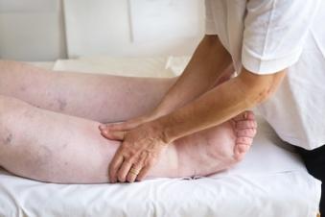A Multidisciplinary Approach to Incontinence Management
December 6, 2018
My current job as wound coordinator has pulled me into the world of incontinence and the many disciplines that care for people challenged by this disorder. I was previously acquainted with the therapy side as I worked with therapists certified in pelvic floor therapy. My work with venous edema acquainted me with medications that caused continence-challenged people to resort to absorbent adult briefs. As I work more closely with physicians, I am more familiar with medications to support weakened or sensitive pelvic muscles and nerves. On the nursing side, I have researched support surfaces, incontinence pads, and barrier creams. I see patients and occupational therapists working together to regain continence independence through problem-solving mobility issues.
Assessment Options for Incontinence
Patients are not always comfortable discussing incontinence issues with health providers and will simply order adult briefs online or purchase them at the store. But truly, as noted, there are many resources in health care to improve the situation. If physicians are the first to help, testing can diagnose what’s going on. Cystoscopes and urodynamic testing can assess the internal structures of the urinary tract, and ultrasound scans check out anatomy. Cystograms are x-ray studies of the bladder in action, while kidney function tests and physical exams can see whether there are palpable abnormalities or leakages. Detailed questioning can discern stressors on the pelvic floor, such as certain drinks, medications, urge irregularity, incomplete bladder emptying, and others. Referral to specialists follows this first step.
Specialists in Incontinence Management
Physical therapists who are specifically trained can help retrain the bladder through exercise, behavior training, biofeedback devices, and education in diet and nutrition. This treatment can at times allow the incontinent client to avoid surgery, medications, and the need for incontinence garments. An 80% success rate alone should motivate people to use physical therapy as a first-line treatment for pelvic floor health.
Occupational therapists may find that mobility, coordination, and strength issues are preventing their clients from reaching full independence. Incontinence can affect people’s ability to work, get out in the world socially, and complete usual self-care. Left unresolved, incontinence can contribute to social withdrawal, depression, fall risk, and impaired intimacy. Risks of infection and skin irritation are added burdens, as is the expense of supplies. Occupational therapists can assess interrelated areas to set a plan of care in motion, such as ability to sequence the toileting tasks and need for equipment to improve safety and mobility in toileting. Muscle and joint restrictions can limit independence; fine motor control can be challenged by buttons and zippers, and all this can lead to anxiety and pain issues.
Traditionally, nurses have tackled the skin issues related to incontinence in their specialty of wound, ostomy and continence nursing. Nurses and CNAs are in the trenches with their patients and are often the first to discuss the issue with their clients in the hospital or clinic. Their knowledge is key for perineal skin care products to protect from moisture denuding, lowering pH, and treating fungal infections. This also means maintaining hydration because many people will cut back on water to prevent incontinence episodes. Unfortunately, this can lead to urinary tract infections, kidney infection, seizures, confusion, blood clots, and low blood pressure. Nurses’ feedback and advocacy to physicians on medication effectiveness or needs are the linchpins in a successful continence plan of care.
Conclusion
This health issue, which embarrasses people and leaves them socially isolated to deal with pain and excoriated skin, does not have to be so. Check the resources listed below for hope to return to an active, healthy, and independent life.
Resources
Ability Rehabilitation. How to control your urinary incontinence. 2018. https://Abilityrehabilitation.com/news/how-to-control-your-urinary-inco…. Accessed November 25, 2018.
Covell-Pierson K. Are you addressing incontinence at home? An OT’s guide. Medbridge. 2018. https://www.medbridgeeducation.com/blog/2018/04/addressing-incontinence…. Accessed November 25, 2018.
National Association for Continence. NAFC doctor finder. https://www.nafc.org/find-a-doctor. 2018. Accessed November 25, 2018.
Wound Ostomy and Continence Nurses Society. Find a wound, ostomy and continence nurse in your area. 2018. https://www.wocn.org/page/Nurse_Referral. Accessed November 25, 2018.
About the Author
Janet Wolfson is a former wound care and lymphedema educator with ILWTI, and a current Wound Care Coordinator at Health South of Ocala with over 30 years of field experience.
The views and opinions expressed in this blog are solely those of the author, and do not represent the views of WoundSource, HMP Global, its affiliates, or subsidiary companies.












Follow WoundSource
Tweets by WoundSource